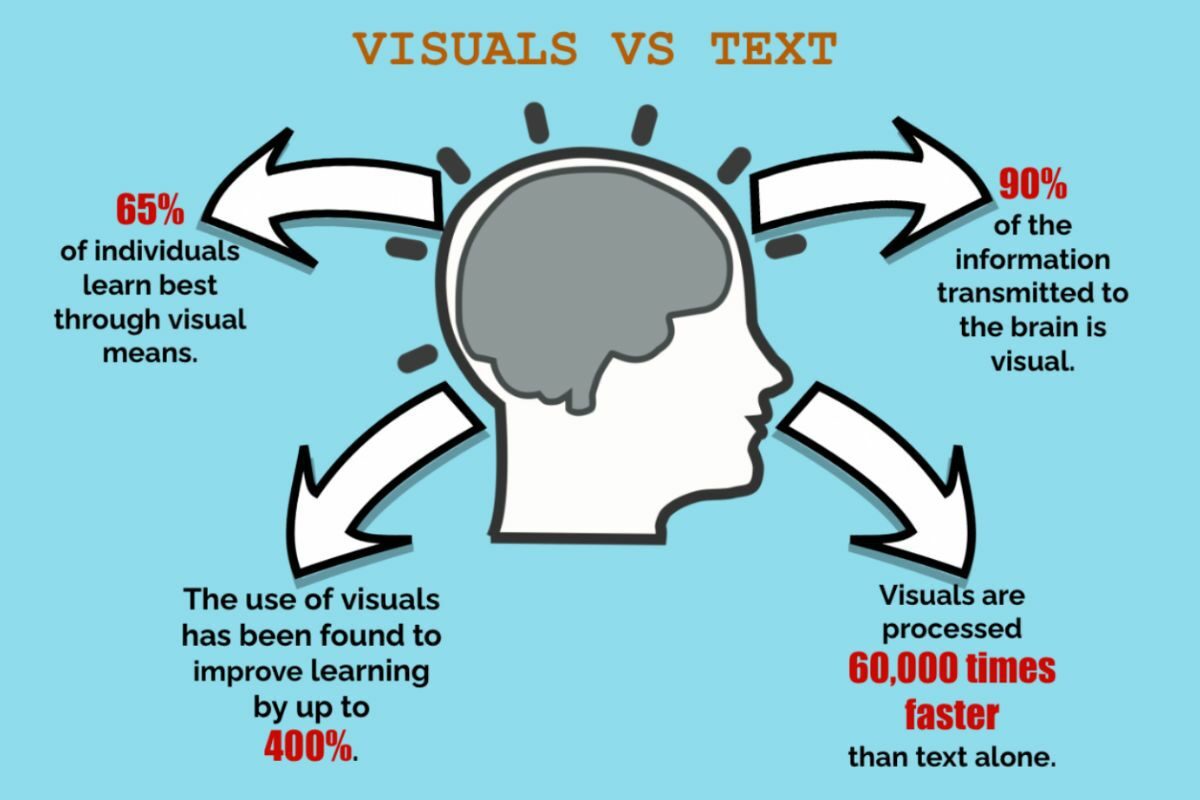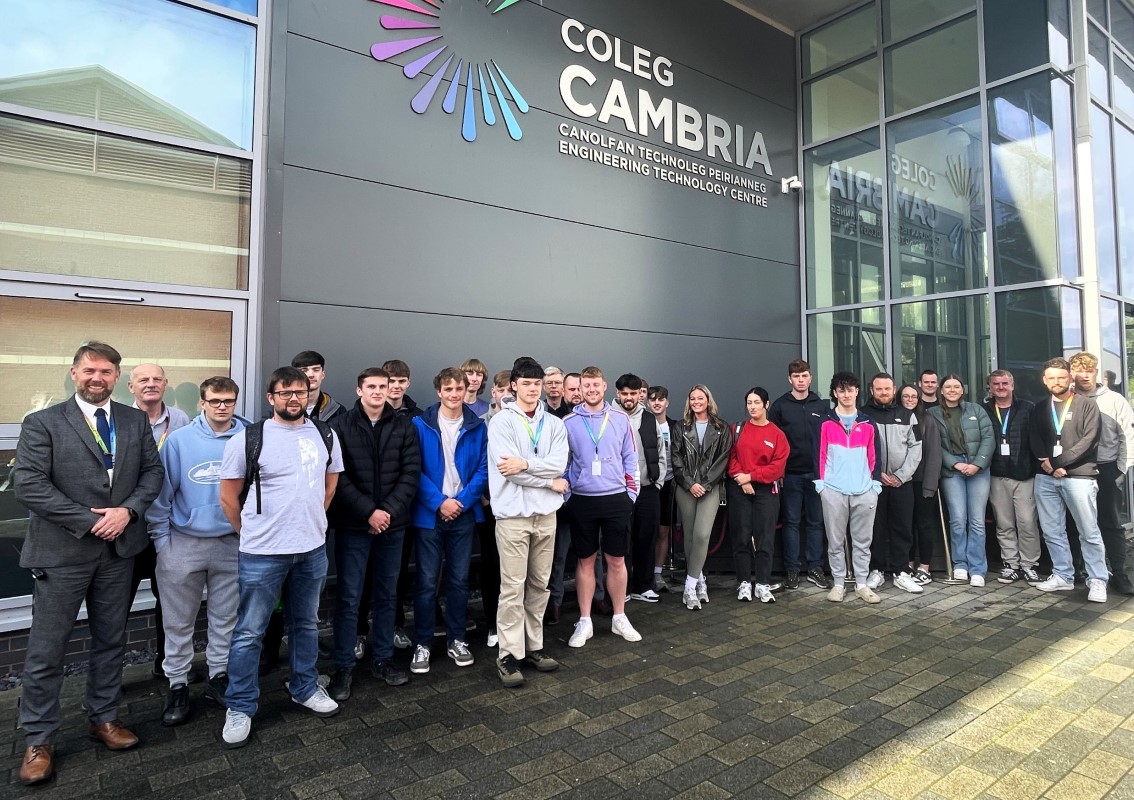TikTok and the 8 Second Attention Span: Study Reveals How UK Education Must Keep Up

As we all have our own individual way of learning, there’s no “one size fits all” method. However, research has shown that in general, visual learning is 83% more effective than using text alone. VideoScribe has looked into the impact of visuals in learning, revealing that the use of visuals can improve learning by up to 400% overall.
A recent study by Microsoft revealed that the human attention span has dropped to eight seconds. This is a clear indicator of the length of the average attention span depleting, decreasing by nearly 25% in just a few years. As a result, many business models are beginning to tailor to the needs of their customers, with the likes of Netflix introducing “90 minute movies”.
There is evidence that this may well be more than partially linked to the increased use, and in turn, reliance, of technology, primarily the use of social media and the internet in general. Supporting this, a study by Ofcom has shown that UK adult internet users spent almost 4 hours online a day with 3 of those hours spent on smartphones.
Visual Learning in Ability to Recall Information
A study testing ability to recall information showed that after 3 days, participants retained 10-20% of written or spoken information but 65% of visual information.
| Presentation | Ability to Recall | |
| after 3 hours | after 3 days | |
| Spoken lecture | 25% | 10-20% |
| Written (reading) | 72% | 10% |
| Visual and verbal (illustrated lecture) | 80% | 65% |
| Participatory (role plays, case studies, practice) | 90% | 70% |
As online culture is now so deeply embedded into our daily routines, with the youngest UK adults born in 2004, how has society’s ability to retain information changed in recent years?
Without the use of visuals as an aid to engagement, most people will only read up to 28% of plain text on a webpage, with most only managing 20%.
The devices children use for the internet differ vastly depending on their age, with a new study revealing that all children aged between 3 – 15 used a tablet computer more than any other device. In fact, all age groups considered within the study, with the exclusion of the youngest children aged 3 to 4, are most likely to use a computer tablet.
As all children above the preschool age are using a tablet most, this further supports the theory that visuals are an important, if not the most important, component in learning. Computer tablets are a great example for a visual way of interpreting information, with a large screen that fits within the user’s hand, almost exclusively relying on imagery and graphics in the way they convey information.
In support of this, Dr. Penny Trayner, a Paediatric Clinical Neuropsychologist, Chartered Psychologist Registered Practitioner and Clinical Psychologist from Clinical Neuropsychology Services Ltd commented on visual learning and its relationship with memory retention:
“You may have read in the press that theories about the dominance of learning styles have largely been debunked as an oversimplification. The likelihood is that most of us (95% of people) will fall in the average range of ability for most skills. Individuals will have strengths and weaknesses within their own profiles, but there is no way of establishing this without detailed cognitive testing that is unnecessary for most people. But the good news is that memory theory and research tell us that ‘richly’ encoded memory traces are much more likely to be retained, and multi-modal learning is a way of more richly encoding information. See it, discuss it, experience it.
In reality, we likely all have strengths and preferences for the way we learn, and the best way to learn something varies from task to task. Taking a broad approach and making education as engaging as possible, targeting multiple senses in different ways, creates the best possible conditions for learning.”
VideoScribe has found that the brain is able to process images that last for just 13 milliseconds and our eyes are able to register 36,000 visual messages per hour, providing further insight into the benefits of visuals.
A poll conducted by VideoScribe surveying 30 adults found that when participants were asked what their learning style is, 15% were auditory learners and 20% were visual learners. However, most believed that they were kinesthetic learners, with 60% retaining information best when actually doing a task, rather than watching or listening. Only 5% of respondents stated they learned best through reading or writing, further revealing that text alone is one of the most ineffective techniques when attempting to retain information.
Pros of Visual Learning
Visual learning has proven to have a range of benefits, assisting with the ability to retain information. Some of the main benefits uncovered include:
- Visuals Teaching is Inclusive
- Visuals Allow Processing Time, Enhancing Retention of Information.
- Visuals Offer an Alternative to Reading
- Visuals Allow for Neutral Engagement
Why Visual Learning is the Future
This research shows that visuals play an important role when attempting to retain information. With attention spans decreasing by an average of 25% in recent years, with the annual increase in online device usage, this study reveals that as we continue to rely on digital, visual formats, people must adapt in order to learn and retain information.
To find out more about VideoScribe, learn more here.
As we all have our own individual way of learning, there’s no “one size fits all” method. However, research has shown that in general, visual learning is 83% more effective than using text alone. VideoScribe has looked into the impact of visuals in learning, revealing that the use of visuals can improve learning by up to 400% overall.
A recent study by Microsoft revealed that the human attention span has dropped to eight seconds. This is a clear indicator of the length of the average attention span depleting, decreasing by nearly 25% in just a few years. As a result, many business models are beginning to tailor to the needs of their customers, with the likes of Netflix introducing “90 minute movies”.
There is evidence that this may well be more than partially linked to the increased use, and in turn, reliance, of technology, primarily the use of social media and the internet in general. Supporting this, a study by Ofcom has shown that UK adult internet users spent almost 4 hours online a day with 3 of those hours spent on smartphones.
Visual Learning in Ability to Recall Information
A study testing ability to recall information showed that after 3 days, participants retained 10-20% of written or spoken information but 65% of visual information.
| Presentation | Ability to Recall | |
| after 3 hours | after 3 days | |
| Spoken lecture | 25% | 10-20% |
| Written (reading) | 72% | 10% |
| Visual and verbal (illustrated lecture) | 80% | 65% |
| Participatory (role plays, case studies, practice) | 90% | 70% |
As online culture is now so deeply embedded into our daily routines, with the youngest UK adults born in 2004, how has society’s ability to retain information changed in recent years?
Without the use of visuals as an aid to engagement, most people will only read up to 28% of plain text on a webpage, with most only managing 20%.
The devices children use for the internet differ vastly depending on their age, with a new study revealing that all children aged between 3 – 15 used a tablet computer more than any other device. In fact, all age groups considered within the study, with the exclusion of the youngest children aged 3 to 4, are most likely to use a computer tablet.
As all children above the preschool age are using a tablet most, this further supports the theory that visuals are an important, if not the most important, component in learning. Computer tablets are a great example for a visual way of interpreting information, with a large screen that fits within the user’s hand, almost exclusively relying on imagery and graphics in the way they convey information.
In support of this, Dr. Penny Trayner, a Paediatric Clinical Neuropsychologist, Chartered Psychologist Registered Practitioner and Clinical Psychologist from Clinical Neuropsychology Services Ltd commented on visual learning and its relationship with memory retention:
“You may have read in the press that theories about the dominance of learning styles have largely been debunked as an oversimplification. The likelihood is that most of us (95% of people) will fall in the average range of ability for most skills. Individuals will have strengths and weaknesses within their own profiles, but there is no way of establishing this without detailed cognitive testing that is unnecessary for most people. But the good news is that memory theory and research tell us that ‘richly’ encoded memory traces are much more likely to be retained, and multi-modal learning is a way of more richly encoding information. See it, discuss it, experience it.
In reality, we likely all have strengths and preferences for the way we learn, and the best way to learn something varies from task to task. Taking a broad approach and making education as engaging as possible, targeting multiple senses in different ways, creates the best possible conditions for learning.”
VideoScribe has found that the brain is able to process images that last for just 13 milliseconds and our eyes are able to register 36,000 visual messages per hour, providing further insight into the benefits of visuals.
A poll conducted by VideoScribe surveying 30 adults found that when participants were asked what their learning style is, 15% were auditory learners and 20% were visual learners. However, most believed that they were kinesthetic learners, with 60% retaining information best when actually doing a task, rather than watching or listening. Only 5% of respondents stated they learned best through reading or writing, further revealing that text alone is one of the most ineffective techniques when attempting to retain information.
Pros of Visual Learning
Visual learning has proven to have a range of benefits, assisting with the ability to retain information. Some of the main benefits uncovered include:
- Visuals Teaching is Inclusive
- Visuals Allow Processing Time, Enhancing Retention of Information.
- Visuals Offer an Alternative to Reading
- Visuals Allow for Neutral Engagement
Why Visual Learning is the Future
This research shows that visuals play an important role when attempting to retain information. With attention spans decreasing by an average of 25% in recent years, with the annual increase in online device usage, this study reveals that as we continue to rely on digital, visual formats, people must adapt in order to learn and retain information.
To find out more about VideoScribe, learn more here.











Responses